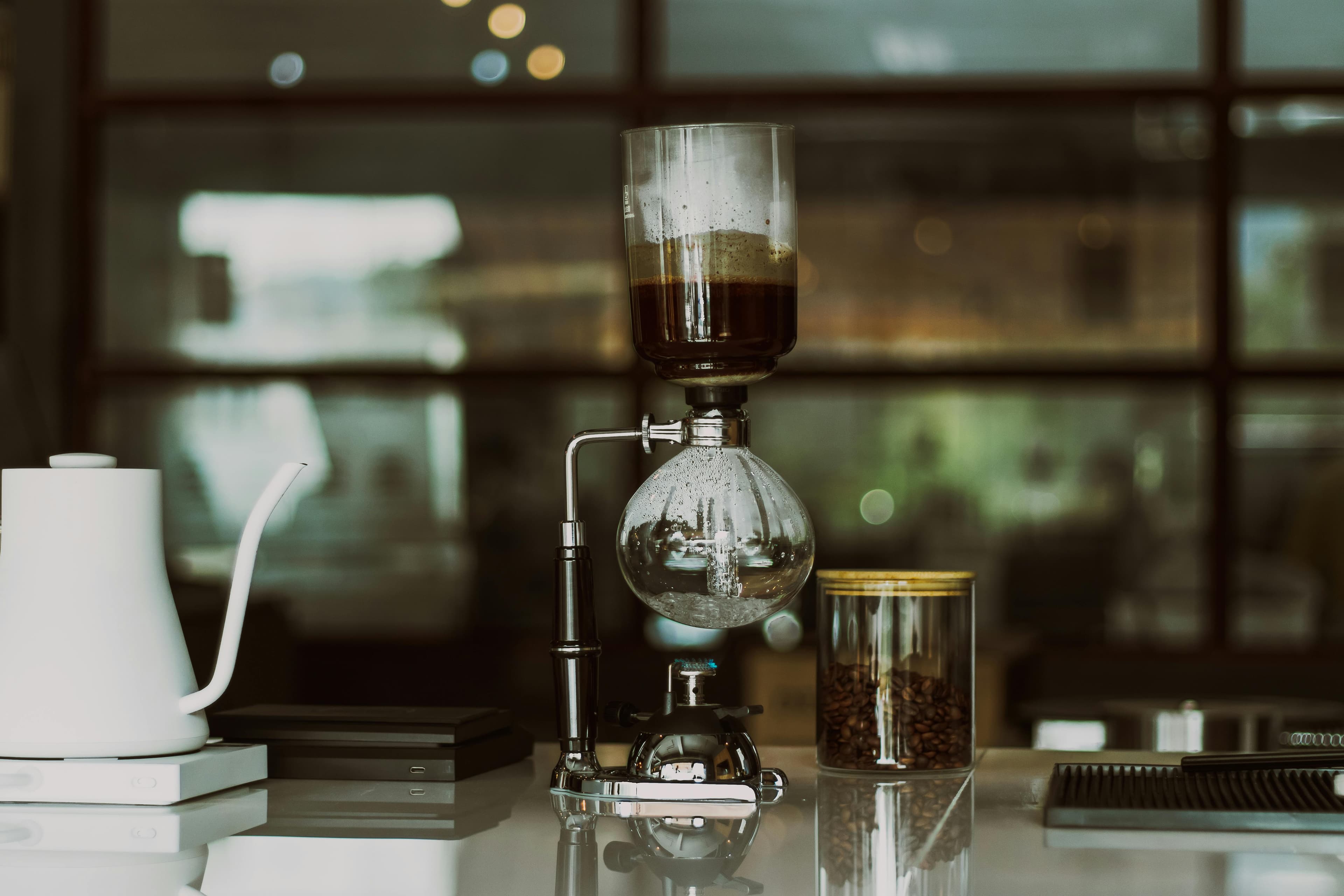The Beginner Guide to Siphon Coffee

If you’ve ever wandered into a specialty café and spotted what looked like a science experiment on the counter—glass chambers, open flames, baristas swirling with the flair of alchemists—you’ve probably seen a siphon coffee maker in action. Also known as a vacuum pot, the siphon delivers one of the most theatrical coffee brewing methods available, but its appeal goes far beyond aesthetics. For those curious about diving deeper into their brewing journey, the siphon offers unmatched clarity, complexity, and control.
What Is a Siphon Coffee Maker?
A siphon coffee maker uses vapor pressure and vacuum suction to brew coffee. It typically includes two glass chambers: a lower one for water and an upper one for coffee grounds. As the water heats, pressure forces it upward into the top chamber, where it mixes with the coffee. After steeping, removing the heat source causes the brewed coffee to draw downward through a filter and back into the lower chamber—leaving the spent grounds behind.
While it may sound intimidating, the process is surprisingly logical once you get the hang of it. And more importantly, it produces coffee that’s clean, aromatic, and full of delicate nuances that can be lost in other methods.
A Brief History of Siphon Coffee
The siphon was invented in the 1830s—almost simultaneously in France and Scotland—at a time when design and refinement were as important as function. Early siphons were crafted from metal and glass, and many doubled as decorative centerpieces for high-society households. Over time, this eccentric brewer became a favorite in Japan, where meticulous brewing culture gave rise to a siphon renaissance that continues today.
Its popularity may have fluctuated, but the siphon has never completely disappeared. In fact, with the rise of third-wave coffee, many enthusiasts are once again embracing it for its combination of precision, showmanship, and rich, balanced results.
Why Brew With a Siphon?
What makes siphon coffee special is the complete control it offers over the brewing environment. Temperature, agitation, brew time, and immersion level can all be fine-tuned. The result is often a bright, tea-like cup with incredible clarity and aroma. It’s especially suited for single-origin beans, where you want to tease out subtle notes and showcase the origin’s characteristics.
But perhaps the biggest draw is the experience. Brewing with a siphon feels ceremonial. It slows you down, requires your attention, and rewards you with more than just a great cup—it’s a ritual.
Basic Equipment You’ll Need
A siphon coffee maker (Yama, Hario, and Bodum are good entry-level brands)
A heat source (butane burner or halogen lamp)
Filter (cloth, metal, or paper)
Coffee grinder (preferably burr-style)
Digital scale and timer
How to Brew With a Siphon (Basic Steps)
Heat water in the bottom chamber
Add filtered water and apply heat. As it warms, insert the top chamber with the filter in place.
Watch as the water rises
Once the water reaches ~200°F, it moves into the upper chamber. Use your stirring paddle to ensure even temperature.
Add ground coffee
Medium grind works best. Stir gently to saturate all the grounds.
Brew for about 45 seconds to 1 minute
Maintain heat and gently agitate if needed. The coffee should bloom and steep like an immersion brew.
Remove the heat source
As the lower chamber cools, a vacuum pulls the brewed coffee down through the filter. You’ll see a beautiful whirlpool effect.
Serve and enjoy
Once complete, remove the top chamber and serve immediately. Sip slowly—this is a cup to savor.
Tips for First-Time Brewers
Use fresh, single-origin beans to truly appreciate the clarity siphon offers.
Pre-wet the filter to reduce paper or cloth taste.
Keep your eye on the heat level—too hot, and it may scorch the coffee.
Clean thoroughly after every use; old coffee oils can quickly ruin flavor.
Brewing with a siphon may seem elaborate at first, but that’s part of its charm. It’s a method that invites you to slow down, pay attention, and fully engage with the process of making coffee. For beginners, it opens the door to a deeper understanding of how variables like temperature and time influence flavor. For seasoned coffee lovers, it’s a chance to rediscover the subtleties in every bean. Whether you’re drawn in by the performance or the precision, one thing’s for sure—once you taste a well-brewed siphon coffee, you’ll understand why this vintage brewer continues to captivate.